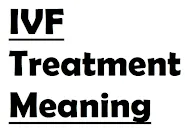The cost of IVF (in vitro fertilization) treatment in the USA can vary significantly depending on various factors such as the clinic, location, and specific medical needs.
On average, a single cycle of IVF can range from *$12,400 to $30,000*. This cost typically includes:
- Healthcare provider, lab, and facility fees
- Tests to monitor ovarian stimulation
- Egg retrieval procedure
- Anesthesia during egg retrieval
- Egg fertilization (embryo creation)
- Transfer of the embryo into the uterus
Medications can add an additional *$2,000 to $7,000* to the overall cost. Many patients may need more than one cycle, which can increase the total expense.
The cost of medications required for IVF treatment can vary widely, but here are some general estimates:
- Ovarian stimulation medications (e.g., gonadotropins like Gonal-F, Follistim, Menopur): $2,000 to $5,000 per cycle
- GnRH agonists/antagonists (e.g., Lupron, Cetrotide, Ganirelix): $500 to $1,000 per cycle
- Trigger shots (e.g., hCG like Ovidrel, Pregnyl): $100 to $250 per shot
- Progesterone supplements (e.g., Crinone, Endometrin, progesterone in oil): $200 to $600 per cycle
These costs can add up quickly, especially if multiple cycles are needed. Some clinics offer medication packages or discounts, and there may be financial assistance programs available to help manage these expenses.
The cost of blood tests during IVF treatment can vary, but here are some general estimates:
- Hormone tests (e.g., FSH, LH, estradiol): $50 to $200 per test
- AMH (Anti-Müllerian Hormone) test: $100 to $300
- Thyroid function tests: $50 to $150
- Infectious disease screening (e.g., HIV, hepatitis): $50 to $200 per test
During IVF treatment, several scanning and imaging procedures are typically required to monitor progress and ensure the best possible outcomes. Here are the main ones:
1. Baseline Ultrasound: This transvaginal ultrasound is performed at the start of the IVF cycle to examine the ovaries and ensure there are no cysts or other issues¹.
2. Follicular Monitoring Ultrasounds: Multiple ultrasounds are conducted during ovarian stimulation to monitor the growth and development of follicles¹⁶. These are usually done every few days.
3. Hysterosalpingography (HSG): This imaging test checks the condition of the uterus and fallopian tubes, ensuring they are conducive to IVF success³.
4. Endometrial Thickness Measurement: Ultrasounds are used to measure the thickness of the uterine lining, which is crucial for embryo implantation¹.
5. First Pregnancy Ultrasound: After a positive pregnancy test, an ultrasound is performed around the sixth or seventh week to confirm the pregnancy and check for the embryo's heartbeat.
These scans and imaging tests are essential for monitoring the IVF process and making any necessary adjustments to the treatment plan.
The costs for the various scanning and imaging procedures during IVF treatment can vary, but here are some general estimates:
1. Baseline Ultrasound: $150 to $300 per scan.
2. Follicular Monitoring Ultrasounds: $150 to $300 per scan, with multiple scans typically required.
3. Hysterosalpingography (HSG): $200 to $600.
4. Endometrial Thickness Measurement: Often included in the cost of follicular monitoring ultrasounds, but if billed separately, it can be around $150 to $300.
5. First Pregnancy Ultrasound: $200 to $400.
If you have any specific questions about these procedures or need more details, feel free to ask!

